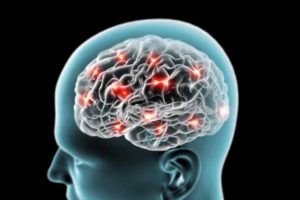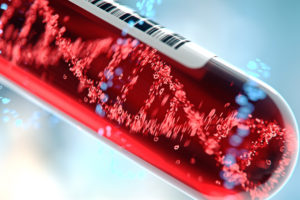Biosciences provides high quality, clinical grade samples, with matched frozen sera (serum), K2-EDTA plasma and peripheral blood mononuclear cells (PBMC) samples from unique Parkinson’s disease patients.
The sera (serum), K2-EDTA plasma and PBMCs are processed from unique Parkinson’s disease (PD) patient’s peripheral whole-blood using customized collection and processing protocols.

Parkinson’s Disease Overview
Parkinson’s disease is a progressive neurological disorder. The first signs are problems with movement.
In fact, smooth and coordinated bodily muscle movements are made possible by dopamine, a substance in the brain. However, dopamine is produced in a part of the brain called the “substantia nigra.”
Accordingly, in Parkinson’s disease, the cells of the substantia nigra start to die. In addition, when this happens, dopamine levels are reduced. Moreover, when they have dropped 60 to 80 percent, symptoms of Parkinson’s start to appear.
Signs and Symptoms of Parkinson’s Disease
Some of the early symptoms of Parkinson’s can begin several years before motor problems develop. These earliest signs include:
- Constipation
- Decreased ability to smell (anosmia)
- Small, cramped handwriting
- Stooped posture
- Voice changes
Motor Problems
The four major motor problems seen are:
- Balance problems and tendency to fall
- Slow movements
- Tremors (shaking that occurs at rest)
- Stiffness of arms, legs, and trunk
Secondary symptoms include:
- A tendency to get stuck when walking
- Blank facial expression
- Decreased blinking and swallowing
- muffled, low-volume speech
- Parkinsonian gait, which is the tendency to take shuffling steps while walking
- Reduced arm swinging when walking
- Tendency to fall backward
Other associated symptoms may include:
- Anxiety
- Depression
- Difficulty with visual-spatial relationships
- Flaky white or yellow scales on oily parts of the skin, known as seborrheic dermatitis
- Hallucinations
- Increased risk of melanoma, a serious type of skin cancer
- Psychosis
- Sleep disturbances including vivid dreams, talking, and movement during sleep
- Problems with attention and memory
Early signs of Parkinson’s disease may go unrecognized. Your body may try to alert you to the movement disorder many years before movement difficulties begin with these warning signs.

Stages of Parkinson’s Disease
Parkinson’s is a progressive disease, which means symptoms of the condition typically gets worsen over time.
Although, many doctors use the Hoehn and Yahr scale to classify its stages. Therefore, this scale divides symptoms into five stages, and it helps healthcare professionals learn how advanced disease signs and symptoms are.
Stage 1
Stage-1 Parkinson’s is the mildest form. In fact, It’s so mild, that you may not experience symptoms that are noticeable. They may not yet interfere with your daily life and tasks.
However, if you do have symptoms, they may be isolated to one side of your body.
Stage 2
Although, the progression from stage 1 to stage 2 can take months or even years. However, each person’s experience will be different.
At this moderate stage, you may experience symptoms such as:
- Changes in facial expressions
- Muscle stiffness
- Tremors
- Trembling
Also, muscle stiffness can complicate daily tasks, prolonging how long it takes you to complete them. However, at this stage, you’re unlikely to experience balance problems.
Moreover, symptoms may appear on both sides of the body. Changes in posture, gait, and facial expressions may be more noticeable.
Stage 3
At this middle stage, symptoms reach a turning point. While you’re unlikely to experience new symptoms, they may be more noticeable. Furthermore, they may also interfere with all of your daily tasks.
Henceforth, movements are noticeably slower, which slows down activities. However, balance issues become more significant, too, so falls are more common. But people with stage 3 Parkinson’s can usually maintain their independence and complete activities without much assistance.
Stage 4
Indeed, the progression from stage 3 to stage 4 brings about significant changes. Therefore, at this point, you will experience great difficulty standing without a walker or assistive device.
Rather, reactions and muscle movements also slow significantly. Living alone can be unsafe, possibly dangerous.
Stage 5
Finally, in this most advanced stage, severe symptoms make around-the-clock assistance a necessity. It will be difficult to stand, if not impossible. A wheelchair will likely be required.
Also, at this stage, individuals with Parkinson’s may experience confusion, delusions, and hallucinations. These complications of the disease can begin in the later stages.
Causes of Parkinson’s Disease
Although, the exact cause of Parkinson’s is unknown. However, it may have both genetic and environmental components. Therefore, some scientists believe that viruses can trigger Parkinson’s as well.
In addition, low levels of dopamine and norepinephrine, a substance that regulates dopamine, have been linked with Parkinson’s.
Hence, abnormal proteins called Lewy bodies have also been found in the brains of people with Parkinson’s. Moreover, scientists do not know what role, if any, Lewy bodies play in the development of Parkinson’s.
While there’s no known cause, research has identified groups of people who are more likely to develop the condition, which include:
- Age. Parkinson’s usually appears between ages 50 and 60 years. It only occurs before 40 years old in about four percent of cases.
- Family history. People who have close family members with Parkinson’s disease are more likely to develop Parkinson’s disease.
- Geographic location may be one reason for a higher risk.
- Head injury. People who experience head injuries may be more likely to develop Parkinson’s disease.
- Race. According to research, there’s a higher prevalence of Parkinson’s in white people compared with Black or Asian people.
- Sex. Men are one and a half times more likely to develop Parkinson’s than women.
- Toxins. Exposure to certain toxins may increase the risk of Parkinson’s disease.
Treatment for Parkinson’s Disease
Treatment for Parkinson’s relies on a combination of:
- Lifestyle changes
- Medications
- Therapies
In fact, adequate rest, exercise, and a balanced dietare important. Moreover, speech therapy, occupational therapy, and physical therapy can also help improve communication and self-care.
Hence, in almost all cases, medication will be required to help manage the various physical and mental health symptoms associated with the disease.
Drugs and Medication Used to Treat Parkinson’s Disease
Following drugs can be used to treat Parkinson’s:
Levodopa
Levodopa is the most common treatment for Parkinson’s. It helps to replenish dopamine.
Although, about 75 percent of cases respond to levodopa, but not all symptoms are improved. However, levodopa is generally given with carbidopa.
In addition, carbidopa delays the breakdown of levodopa which in turn increases the availability of levodopa at the blood-brain barrier.
Dopamine Agonists
Although, dopamine agonists can imitate the action of dopamine in the brain. However, they’re less effective than levodopa, but they can be useful as bridge medications when levodopa is less effective.
Hence, drugs in this class include bromocriptine, pramipexole, and ropinirole.
Anticholinergics
Anticholinergics are used to block the parasympathetic nervous system. They can help with rigidity.
Hence, benztropine (Cogentin) and trihexyphenidyl are anticholinergics used to treat Parkinson’s.
Amantadine (Symmetrel)
Indeed, amantadine (symmetrel) can be used along with carbidopa-levodopa. It’s a glutamate-blocking drug (NMDA). Moreover, it offers short-term relief for the involuntary movements (dyskinesia) that can be a side effect of levodopa.
COMT inhibitors
In fact, catechol O-methyltransferase (COMT) inhibitors prolong the effect of levodopa. Entacapone (Comtan) and tolcapone (Tasmar) are examples of COMT inhibitors.
However, tolcapone can cause liver damage. It’s usually saved for people who do not respond to other therapies.
Nonetheless, ectacapone does not cause liver damage.
Accordingly, stalevo is a drug that combines ectacapone and carbidopa-levodopa in one pill.
MAO-B inhibitors
Although, MAO-B inhibitors inhibit the enzyme monoamine oxidase B. Therefore, this enzyme breaks down dopamine in the brain. Selegiline (Eldepryl) and rasagiline (Azilect) are examples of MAO-B inhibitors.
Moreover, talk with your doctor before taking any other medications with MAO-B inhibitors. They can interact with many drugs, including:
- Antidepressants
- Ciprofloxacin
- St. John’s wort
- Some narcotics
In fact, over time, the effectiveness of Parkinson’s medications can decrease. Moreover, by late-stage Parkinson’s, the side effects of some medications may outweigh the benefits. However, they may still provide adequate management of symptoms.
Parkinson’s Disease Surgery
Surgical interventions are reserved for people who do not respond to medication, therapy, and lifestyle changes.
Therefore, two primary types of surgery are used to treat Parkinson’s:
Deep Brain Stimulation
During deep brain stimulation (DBS), surgeons implant electrodes in specific parts of the brain. A generator connected to the electrodes sends out pulses to help reduce symptoms.
Pump-Delivered Therapy
In January 2015, the Food and Drug Administration (FDA) approved a pump-delivered therapy called Duopa.
The pump delivers a combination of levodopa and carbidopa. Moreover, in order to use the pump, your doctor will have to perform a surgical procedure to place the pump near the small intestine.
Biospecimens
Bay Biosciences is a global leader in providing researchers with high quality, clinical grade, fully characterized human tissue samples, bio-specimens, and human bio-fluid collections.
Samples available include cancer (tumor) tissue, cancer serum, cancer plasma, cancer, peripheral blood mononuclear cells (PBMC). and human tissue samples from most other therapeutic areas and diseases.
Bay Biosciences maintains and manages its own bio-repository, the human tissue bank (biobank) consisting of thousands of diseased samples (specimens) and from normal healthy donors available in all formats and types.
In fact, our biobank procures and stores fully consented, de-identified and institutional review boards (IRB) approved human tissue samples and matched controls.
Our human tissue collections, specimens, and bio-fluids come with detailed patient clinical data associated with them.
So this critical patient’s clinical data includes information relating to their past and current disease, treatment history, lifestyle choices, biomarkers, and genetic information.
Additionally, new effective treatments (drug discovery & development) in oncology, and other therapeutic areas and diseases are identified by researchers using patient’s data which is extremely valuable.
Bay Biosciences banks wide variety of human tissue samples and biological samples, including cryogenically preserved at – 80°C.
For example fresh frozen tissue samples, tumor tissue samples, formalin-fixed paraffin-embedded (FFPE), tissue slides, with matching human bio-fluids, whole blood and blood-derived products such as serum, plasma and PBMC.
Bay Biosciences is a global leader in collecting and providing human tissue samples according to the specified requirements and customized, tailor-made collection protocols.
Please contact us anytime to discuss your special research projects and customized human tissue sample requirements.
Types of Biospecimens
Bay Biosciences provides human tissue samples (human specimens) from diseased and normal healthy donors which includes:
- Peripheral whole-blood
- Amniotic fluid
- Bronchoalveolar lavage fluid (BAL)
- Sputum
- Pleural effusion
- Cerebrospinal fluid (CSF)
- Serum (sera)
- Plasma
- Peripheral blood mononuclear cells (PBMC)
- Saliva
- Buffy coat
- Urine
- Stool samples
- Aqueous humor
- Vitreous humor
- Kidney stones (renal calculi)
- Other bodily fluids from most diseases including cancer.
Moreover, we can also procure most human bio-specimens, special collections and requests for human samples that are difficult to find. All our human tissue samples are procured through IRB-approved clinical protocols and procedures.
In addition to the standard processing protocols, Bay Biosciences can also provide human plasma, serum, and PBMC bio-fluid samples using custom processing protocols; you buy donor-specific collections in higher volumes and specified sample aliquots from us.
Bay Biosciences also provides human samples from normal healthy donors; volunteers, for controls and clinical research, contact us Now.
- 日本のお客様は、ベイバイオサイエンスジャパンBay Biosciences Japanまたはhttp://baybiosciences-jp.com/contact/までご連絡ください。


